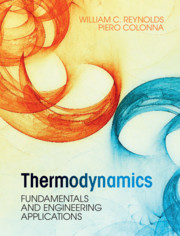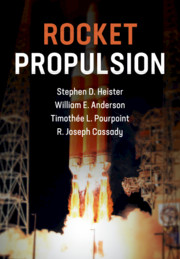Refine search
Actions for selected content:
5486 results in Thermal-fluids engineering
References
-
- Book:
- An Introduction to Tides
- Published online:
- 08 June 2019
- Print publication:
- 20 June 2019, pp 205-210
-
- Chapter
- Export citation
6 - Tides in Coastal Seas and Basins
-
- Book:
- An Introduction to Tides
- Published online:
- 08 June 2019
- Print publication:
- 20 June 2019, pp 122-156
-
- Chapter
- Export citation
Frontmatter
-
- Book:
- An Introduction to Tides
- Published online:
- 08 June 2019
- Print publication:
- 20 June 2019, pp i-iv
-
- Chapter
- Export citation
7 - Internal Tides
-
- Book:
- An Introduction to Tides
- Published online:
- 08 June 2019
- Print publication:
- 20 June 2019, pp 157-200
-
- Chapter
- Export citation

Thermodynamics
- Fundamentals and Engineering Applications
-
- Published online:
- 15 June 2019
- Print publication:
- 20 September 2018
-
- Textbook
- Export citation

An Introduction to Tides
-
- Published online:
- 08 June 2019
- Print publication:
- 20 June 2019

Rocket Propulsion
-
- Published online:
- 21 March 2019
- Print publication:
- 07 February 2019
-
- Textbook
- Export citation
7 - Laser Discharge
-
- Book:
- Energy Deposition for High-Speed Flow Control
- Published online:
- 08 February 2019
- Print publication:
- 21 February 2019, pp 199-242
-
- Chapter
- Export citation
Contents
-
- Book:
- Energy Deposition for High-Speed Flow Control
- Published online:
- 08 February 2019
- Print publication:
- 21 February 2019, pp vii-x
-
- Chapter
- Export citation
1 - Introduction
-
- Book:
- Energy Deposition for High-Speed Flow Control
- Published online:
- 08 February 2019
- Print publication:
- 21 February 2019, pp 1-5
-
- Chapter
- Export citation
2 - Fundamental Equations
-
- Book:
- Energy Deposition for High-Speed Flow Control
- Published online:
- 08 February 2019
- Print publication:
- 21 February 2019, pp 6-27
-
- Chapter
- Export citation
9 - Flow Control in Aerodynamics
-
- Book:
- Energy Deposition for High-Speed Flow Control
- Published online:
- 08 February 2019
- Print publication:
- 21 February 2019, pp 273-336
-
- Chapter
- Export citation
3 - Statistical Mechanics and Continuum Physics
-
- Book:
- Energy Deposition for High-Speed Flow Control
- Published online:
- 08 February 2019
- Print publication:
- 21 February 2019, pp 28-66
-
- Chapter
- Export citation
Appendix B - Physical Constants
-
- Book:
- Energy Deposition for High-Speed Flow Control
- Published online:
- 08 February 2019
- Print publication:
- 21 February 2019, pp 339-340
-
- Chapter
- Export citation
Appendix C - Microwave Frequency Bands
-
- Book:
- Energy Deposition for High-Speed Flow Control
- Published online:
- 08 February 2019
- Print publication:
- 21 February 2019, pp 341-341
-
- Chapter
- Export citation
Preface
-
- Book:
- Energy Deposition for High-Speed Flow Control
- Published online:
- 08 February 2019
- Print publication:
- 21 February 2019, pp xi-xii
-
- Chapter
- Export citation
Dedication
-
- Book:
- Energy Deposition for High-Speed Flow Control
- Published online:
- 08 February 2019
- Print publication:
- 21 February 2019, pp v-vi
-
- Chapter
- Export citation
Subject Index
-
- Book:
- Energy Deposition for High-Speed Flow Control
- Published online:
- 08 February 2019
- Print publication:
- 21 February 2019, pp 449-450
-
- Chapter
- Export citation
Notes
-
- Book:
- Energy Deposition for High-Speed Flow Control
- Published online:
- 08 February 2019
- Print publication:
- 21 February 2019, pp 372-421
-
- Chapter
- Export citation
Appendix A - Vector Analysis
-
- Book:
- Energy Deposition for High-Speed Flow Control
- Published online:
- 08 February 2019
- Print publication:
- 21 February 2019, pp 337-338
-
- Chapter
- Export citation
